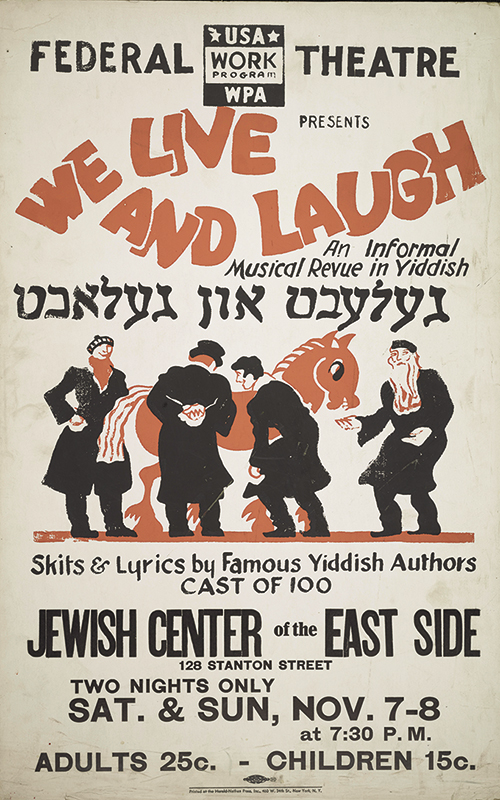
Federal Theatre Project poster, 1934 (Library of Congress)
The vibrant world of Yiddish theater that flourished in the late-19th to the mid-20th century on Manhattan’s Lower East Side reflected the lives, desires, and dreams of newly arrived Jewish immigrants, primarily of Eastern and Central European origins. Yiddish-language theater existed in Russia and Europe, but the movement that took hold in New York City was exceptional in its scope, its influence on the American theater and entertainment industry, and, most importantly, the essential role it played for an immigrant population making its way in the United States.
Written and presented in the mother tongue of its audiences, the plays offered a wide range of genres including comedy, melodrama, and modernist works. Playwrights and stars of the stage were idolized, and productions touched viewers by providing sentimental connections to past lives and new ways forward as Americans.
Nancy Friedland, a librarian for film studies and performing arts at Columbia University, chronicles a unique moment in history as she discusses the importance of Yiddish theater in the lives of Jewish immigrants and several seminal playwrights, actors, and other figures that helped create it. She parallels the growth of New York’s Jewish immigrant population with that of the Yiddish theater as its stages evolved from small performance spaces to the grand venues that would populate Second Avenue during an era that became known as the golden age of Yiddish theater in America.
General Information